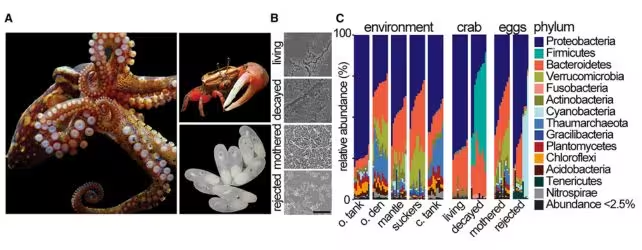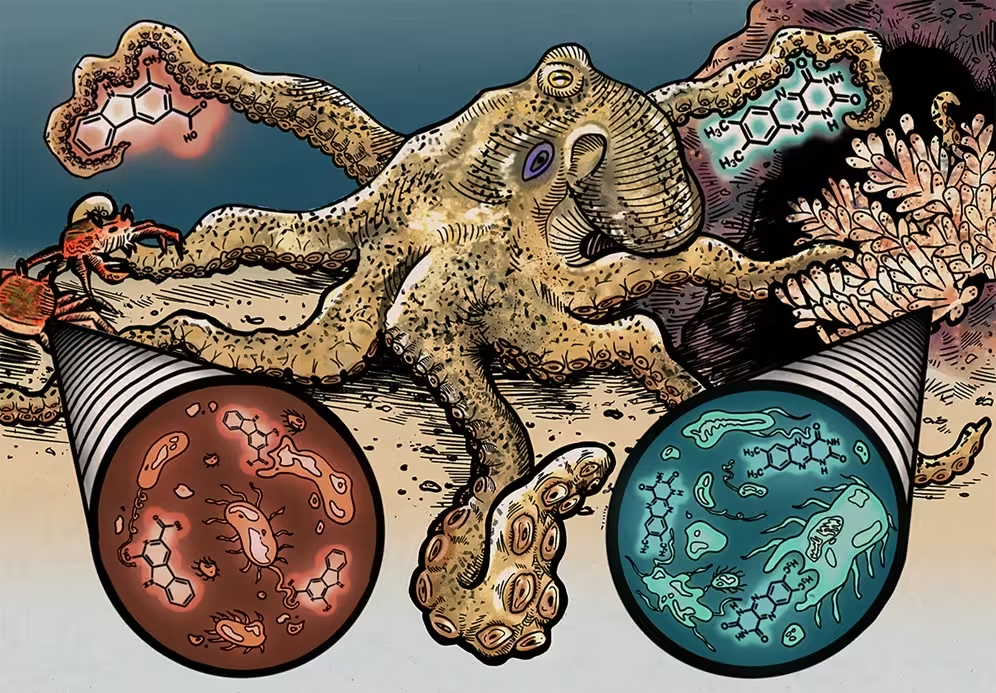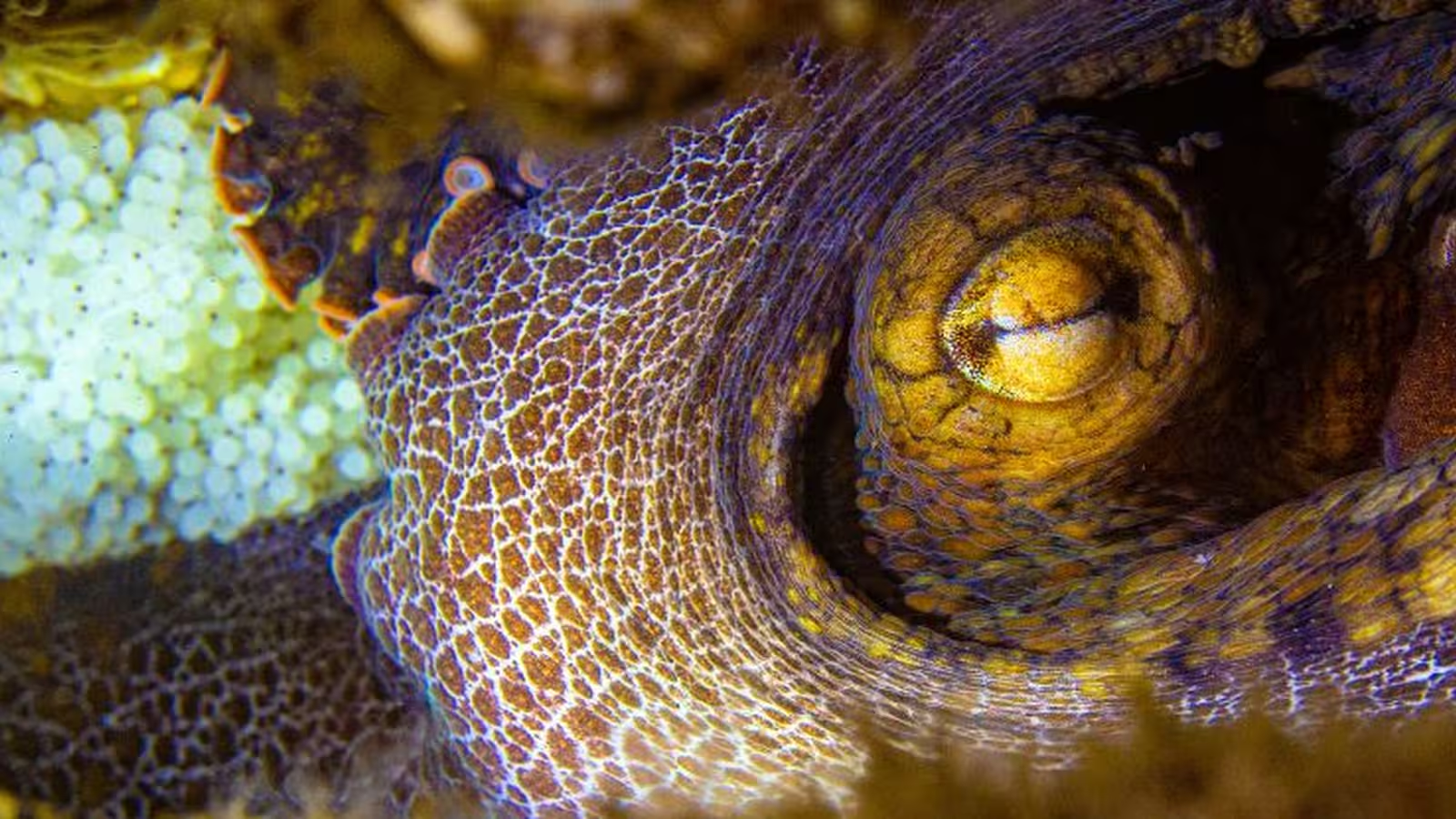4 Minutes
The Remarkable Sensory World of the Octopus
Octopuses, among the most intelligent invertebrates in the ocean, possess an extraordinary ability to interact with their environment. Unlike most animals, octopuses can "taste by touch" using specialized sensory receptors located on their arms. Recent scientific findings reveal that this ability is crucial for both their survival and the care of their offspring. New research conducted by a team at Harvard University demonstrates that octopuses detect chemical signals produced by microbes on surfaces like dead crabs and octopus egg casings. These signals—akin to distinct 'flavors'—enable the octopus to differentiate viable eggs and edible prey from those that are compromised or unsafe.
How Octopus Arms Detect Chemical Cues
Octopus arms are equipped with densely packed neurons and chemoreceptors, making them highly sensitive to environmental chemicals. This neural complexity allows the creature to make rapid, even autonomous, decisions when hunting or nurturing. The California two-spot octopus (Octopus bimaculoides) served as the model organism in this in-depth study, which sought to unravel how octopuses select what to feed on and which eggs to protect.
The lead biochemist, Rebecka Sepela, explained, "If a certain microbial strain triggers an octopus sensory receptor, it sends a neural signal indicating to the animal: this is significant." In essence, the octopus's arm receptors act as biochemical sensors, interpreting the surrounding environment via the language of microbial molecules.

Research Methodology: Isolating the Chemical Conversations
To decode this sensory system, scientists collected 295 unique bacterial strains from natural octopus habitats. The samples came from surfaces closely associated with octopus ecology, such as the shells of fiddler crabs (Leptuca pugilator)—a common prey—and the egg casings of their own brood. Laboratory tests then exposed octopus sensory receptors to each bacterial strain to observe neural activation.
The microbial communities on these surfaces varied dramatically. The shells of live crabs were almost bacteria-free, while those of decaying crabs teemed with diverse bacterial populations. Similarly, octopus egg casings maintained by attentive mothers carried a stable, curated microbiome. However, when eggs were abandoned, this balance collapsed, leading to invasive growth of spiral-shaped bacteria.
Sepela notes, "Microbes act as chemical factories, constantly absorbing environmental cues and producing molecules that mirror those changes. This molecular output is what octopuses detect."
Key Findings: Chemical Language Determines Octopus Behavior
Experimental results indicated that only certain bacteria—primarily those associated with decaying prey or unhealthy eggs—elicited a neural response from octopus receptors. To confirm the effect, the researchers conducted behavioral tests: female octopuses brooding their eggs were presented with artificial egg clusters, some coated with the spiral bacteria found on neglected or spoiled eggs. The octopuses cared for most mimic eggs, but rejected and discarded those tagged with the "unhealthy" bacterial signals.
Critically, scientists identified the distinct molecules responsible for activating the octopus sensory system. These chemical compounds are robust enough to remain on surfaces even in the aquatic environment, allowing reliable signaling under the sea.

Broader Biological Implications and Future Directions
Although this discovery centers on octopuses, the research team believes that similar microbial signaling systems operate in many animal-microbiome relationships, potentially including humans. Harvard cell physiologist Nicholas Bellono points out, "While this seems like a specific case, what we’re observing could be a universal principle for how organisms sense and interpret their microbiomes."
This study underscores the fundamental role of microbiomes in shaping animal physiology and behavior across diverse species. As researchers deepen our understanding of microbial communication, new frontiers may open in marine biology, sensory neuroscience, and even biomedicine.
Conclusion
Through advanced sensory capabilities and intricate microbial interactions, octopuses demonstrate a remarkable ability to evaluate both their environment and progeny. The discovery that microbial chemical cues—essentially invisible flavors—guide maternal care, hunting, and decision-making adds a new dimension to our understanding of animal behavior. This research not only highlights the sophistication of cephalopod sensory systems but also points to the profound influence of microbial ecosystems throughout the tree of life.
Source: doi



Comments